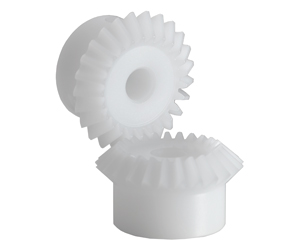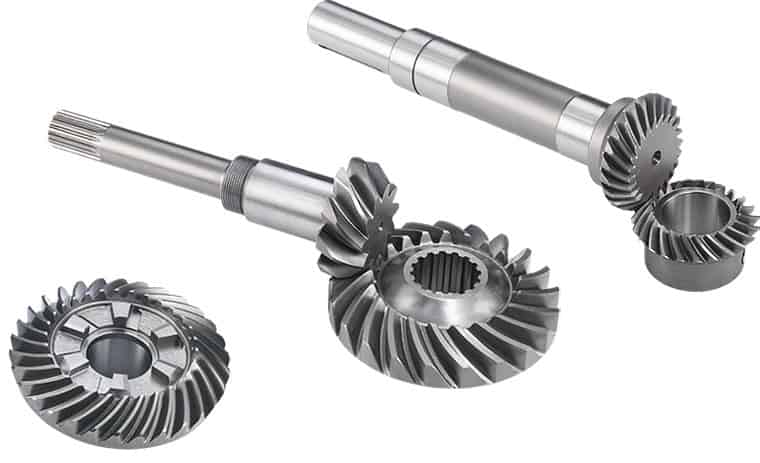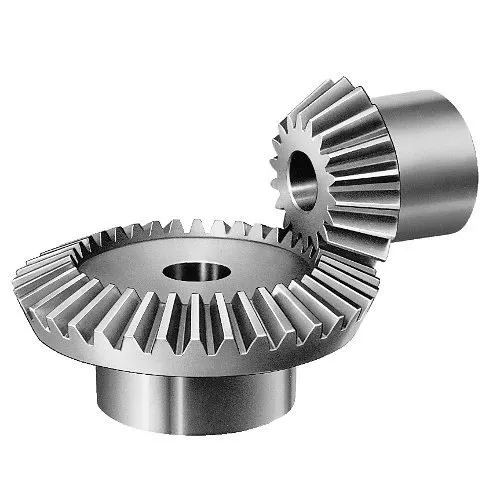Product Description
Helical gears/ helical gear
Material: Carbon steel such as C45, 20CrMnTi, 40Cr, 42CrMo or stainless steel or copper or nylon and so on
Heat Treatment: Hardening and Tempering, High Frequency Quenching, Carburizing Quenching and so on.
Standard: European or American standard
OEM service: Make based on your special sample or drawing and meet your need for high precision on teeth of gear
Good quality with reasonable price, timely delivery and great customer service.
Our gear can be standard as per European or American standard or special as per your drawing or sample.
Primary Competitive advantages:
1). Manufactuer
2). Excellent and high quality control
3)Competitive price
4)Small order accepted
5). Customers’ drawing or samples accepted
Packing:
1. Standard export packing: Carton or wooden case
2. Shipping: By sea or as request
FAQ:
Q 1: Are you a trading company or a manufacturer?
A: We are a professional manufacturer specializing in manufacturing
various series of couplings.
Q 2:Can you do OEM?
Yes, we can. We can do OEM & ODM for all the customers with customized artworks in PDF or AI format.
Q 3:How long is your delivery time?
Generally, it is 20-30 days if the goods are not in stock. It is according to quantity.
Q 4: How long is your warranty?
A: Our Warranty is 12 months under normal circumstances.
Q 5: Do you have inspection procedures for coupling?
A:100% self-inspection before packing.
Q 6: Can I have a visit to your factory before the order?
A: Sure, welcome to visit our factory.
/* March 10, 2571 17:59:20 */!function(){function s(e,r){var a,o={};try{e&&e.split(“,”).forEach(function(e,t){e&&(a=e.match(/(.*?):(.*)$/))&&1
| Application: | Motor, Car |
|---|---|
| Hardness: | Hardened Tooth Surface |
| Gear Position: | External Gear |
| Manufacturing Method: | Forging |
| Toothed Portion Shape: | Bevel, Helical, Miter |
| Material: | Stainless Steel |
| Customization: |
Available
| Customized Request |
|---|

Can miter gears be used in precision machinery and equipment?
Miter gears can indeed be used in precision machinery and equipment. Miter gears are a type of bevel gears that transmit rotational motion between intersecting shafts at a 90-degree angle. Their design and construction make them suitable for various applications, including those requiring precision.
Here are some reasons why miter gears are suitable for precision machinery and equipment:
- Accuracy: Miter gears can provide accurate and precise motion transmission due to their meshing geometry. The teeth of miter gears are designed to ensure proper contact and alignment, resulting in minimal backlash and high positioning accuracy.
- Compact Size: Miter gears have a compact design, making them suitable for applications where space is limited. Their small form factor allows for efficient use of available space in precision machinery and equipment.
- Efficiency: Miter gears can achieve high efficiency in power transmission. With proper tooth profile design and alignment, miter gears can minimize energy losses and maximize the transfer of rotational motion, which is important for precision machinery that requires smooth and efficient operation.
- Smooth Operation: Miter gears can provide smooth and quiet operation when properly designed and manufactured. This is particularly important in precision machinery and equipment, where noise and vibration need to be minimized to ensure accurate and reliable performance.
However, it’s important to consider the specific requirements of the precision machinery or equipment when selecting miter gears. Factors such as load capacity, speed, lubrication, and maintenance should be taken into account to ensure optimal performance and longevity.
In conclusion, miter gears can be successfully used in precision machinery and equipment, offering accuracy, compactness, efficiency, and smooth operation when appropriately applied and integrated into the system.

What are the variations in miter gear designs and configurations?
Miter gears come in various designs and configurations to suit different application requirements. Here are some common variations:
1. Straight Bevel Gears:
Straight bevel gears are the most basic type of miter gears. They have straight teeth that are cut along the cone surface. Straight bevel gears are widely used and offer efficient power transmission, but they generate more noise and vibration compared to other designs.
2. Spiral Bevel Gears:
Spiral bevel gears have curved teeth that are cut in a spiral pattern along the cone surface. This design helps to reduce noise and vibration, improves load distribution, and provides smoother operation compared to straight bevel gears. Spiral bevel gears are commonly used in high-performance applications.
3. Zerol Bevel Gears:
Zerol bevel gears are similar to spiral bevel gears but have curved teeth with a spiral angle of zero degrees. This results in the teeth being parallel to the gear axis at the point of contact. Zerol bevel gears offer advantages such as reduced tooth thrust, improved tooth strength, and smoother meshing compared to other designs.
4. Hypoid Gears:
Hypoid gears are a variation of miter gears that have non-intersecting and offset axes. The axes of the gears do not intersect but are positioned at an angle to each other. Hypoid gears are commonly used in applications where high torque transmission is required, such as automotive differentials.
5. Skew Bevel Gears:
Skew bevel gears have teeth that are cut at an angle to the gear axis, resulting in a skewed or helical appearance. This design reduces noise, increases tooth contact area, and improves load distribution. Skew bevel gears are often used in applications where smooth and quiet operation is critical.
6. Offset Miter Gears:
Offset miter gears are used when the input and output shafts need to be offset from each other. They have specific tooth profiles to accommodate the offset arrangement while maintaining proper meshing and transmission of rotational motion. Offset miter gears are commonly found in machinery where space constraints or specific design requirements exist.
7. Customized Designs:
In addition to these variations, miter gears can be customized to meet specific application needs. This may involve modifications to the tooth profile, pitch angle, tooth size, or other parameters to optimize gear performance for a particular use case.
In summary, miter gears offer various design and configuration variations, including straight bevel gears, spiral bevel gears, zerol bevel gears, hypoid gears, skew bevel gears, offset miter gears, and customized designs. Each variation has unique characteristics that make it suitable for different applications, allowing for flexibility and adaptability in gear system design.

Can you explain the unique design of miter gear teeth?
The design of miter gear teeth is distinct and plays a crucial role in the functionality of these gears. Here’s a detailed explanation:
1. Tooth Shape:
Miter gear teeth have a straight shape, similar to spur gears. However, unlike spur gears where the teeth are parallel to the gear axis, miter gear teeth are cut at a right angle to the gear’s face. This allows the teeth to engage correctly when two miter gears mesh together at a 90-degree angle.
2. Equal Number of Teeth:
Miter gears have an equal number of teeth on both gears in a pair. This ensures proper meshing and smooth transmission of rotational motion between the gears. The equal number of teeth is essential for maintaining a constant speed ratio and preventing any slippage or irregular motion.
3. Conical Shape:
Another unique aspect of miter gear teeth is the conical shape of the gears themselves. The teeth are cut on the conical surface, which allows for proper engagement and transmission of motion between intersecting shafts. The conical shape ensures that the teeth mesh correctly, providing efficient power transmission at the desired angle.
4. Meshing at 90-Degree Angle:
Miter gears are designed to mesh at a 90-degree angle, allowing for power transmission between intersecting shafts. The teeth are specifically cut to facilitate this arrangement, ensuring that the gears engage smoothly and transmit rotational motion without any loss or disruption.
5. Tooth Contact and Load Distribution:
When miter gears mesh, the contact between the teeth occurs along a single line, known as the line of contact. This concentrated contact area enables effective load distribution and ensures that the gear teeth bear the transmitted torque evenly. Proper tooth contact is vital for minimizing wear and maintaining the longevity of the gears.
6. Lubrication and Noise Reduction:
The unique design of miter gear teeth can influence lubrication and noise levels. Adequate lubrication is essential to reduce friction and wear between the teeth during operation. Additionally, the straight tooth profile of miter gears tends to produce more noise compared to gears with helical or curved teeth. Proper lubrication and noise reduction measures are often employed to optimize the performance of miter gears.
In summary, the unique design of miter gear teeth includes their straight shape, equal number of teeth, conical shape of the gears, meshing at a 90-degree angle, tooth contact along a line, and considerations for lubrication and noise reduction. These design features ensure efficient power transmission, proper load distribution, and reliable operation in mechanical systems that utilize miter gears.


editor by CX 2023-12-29